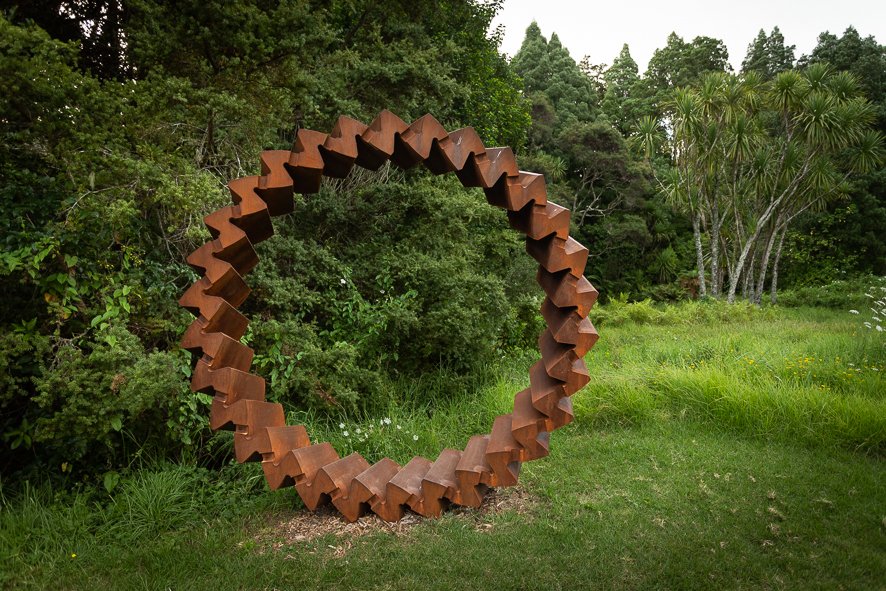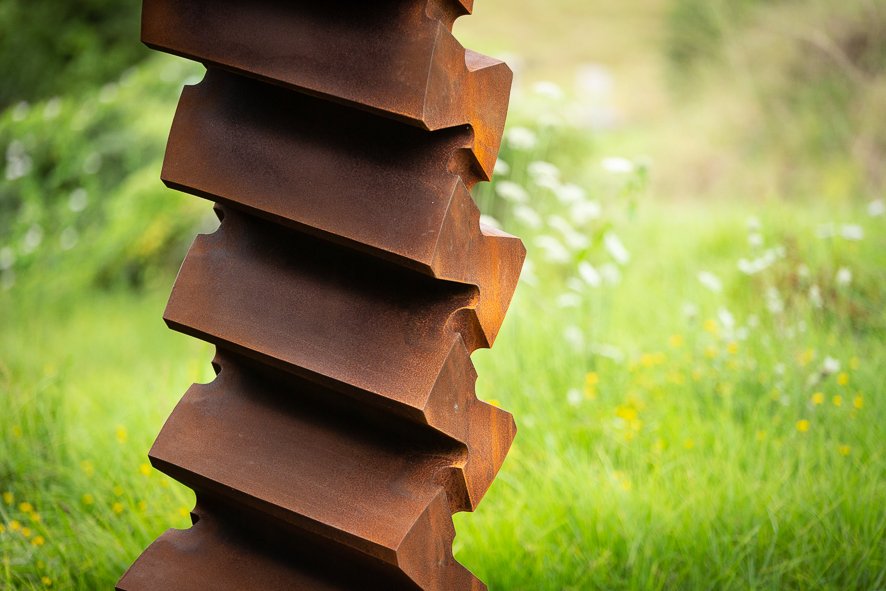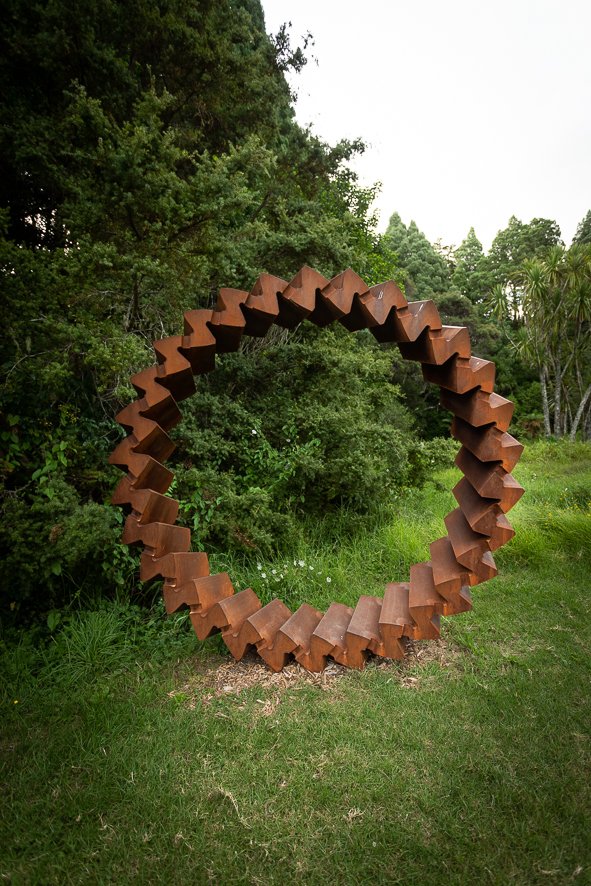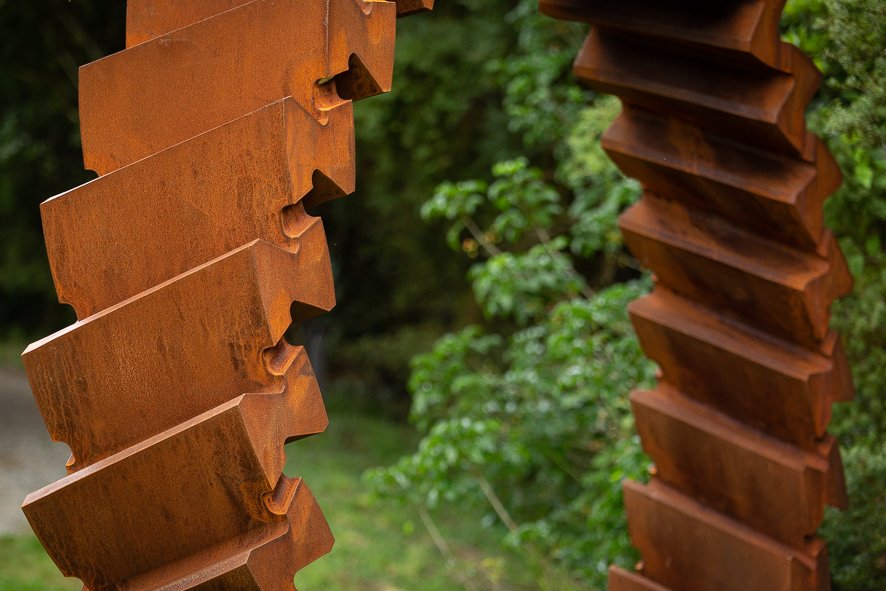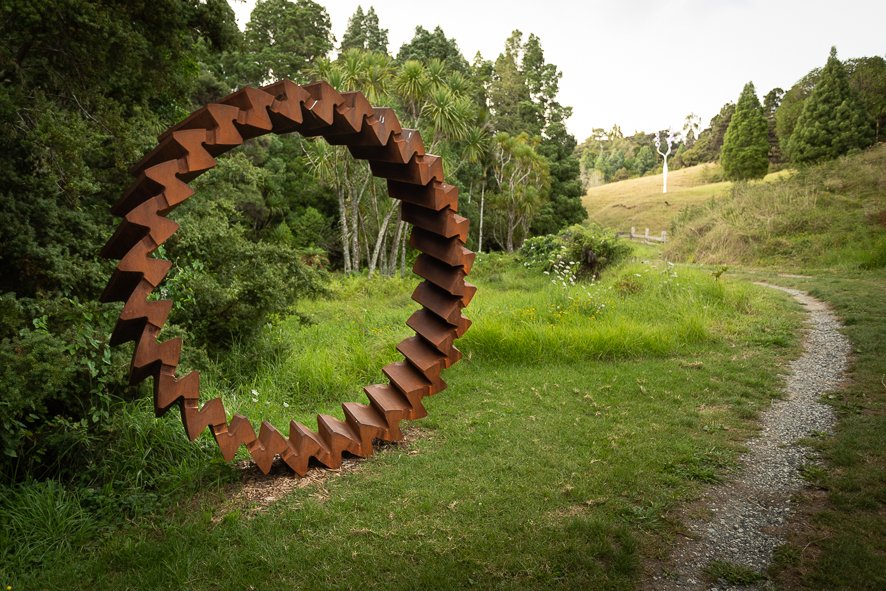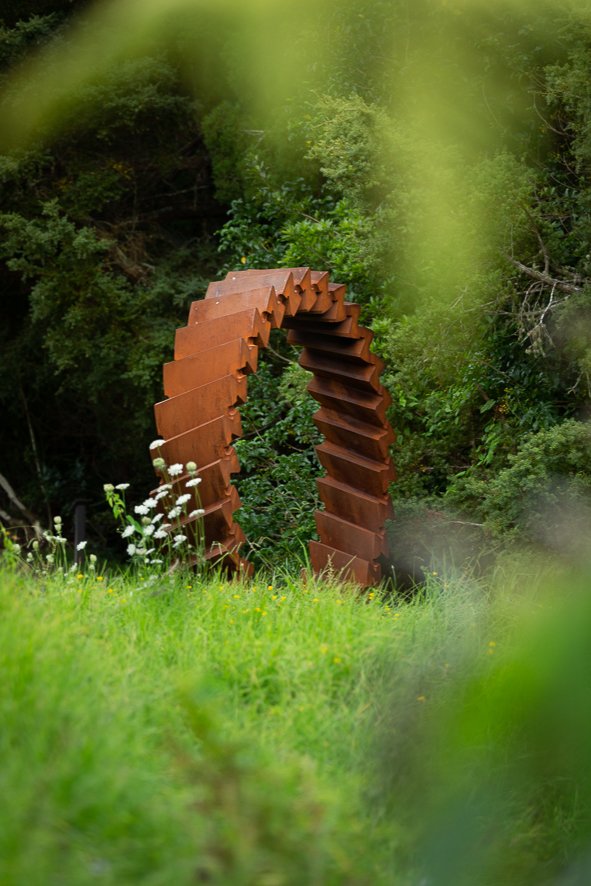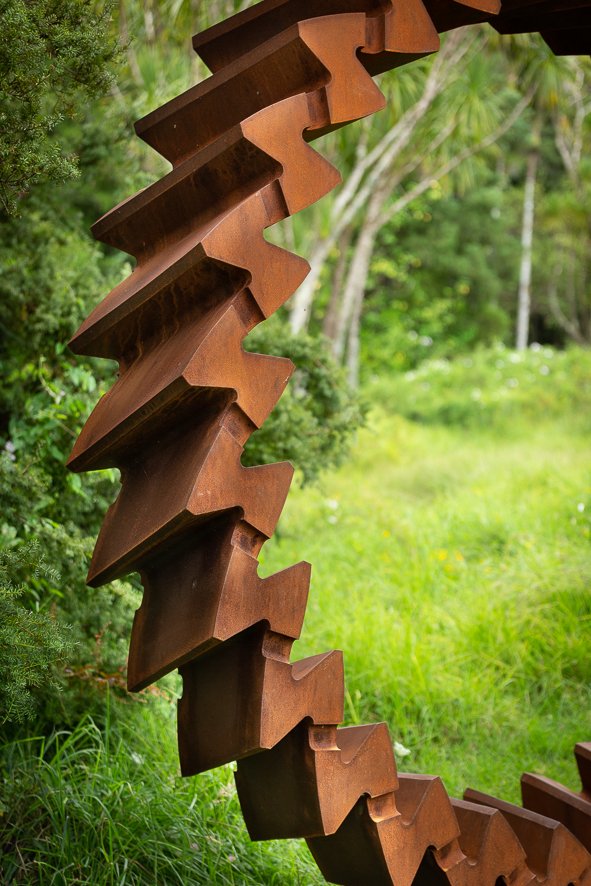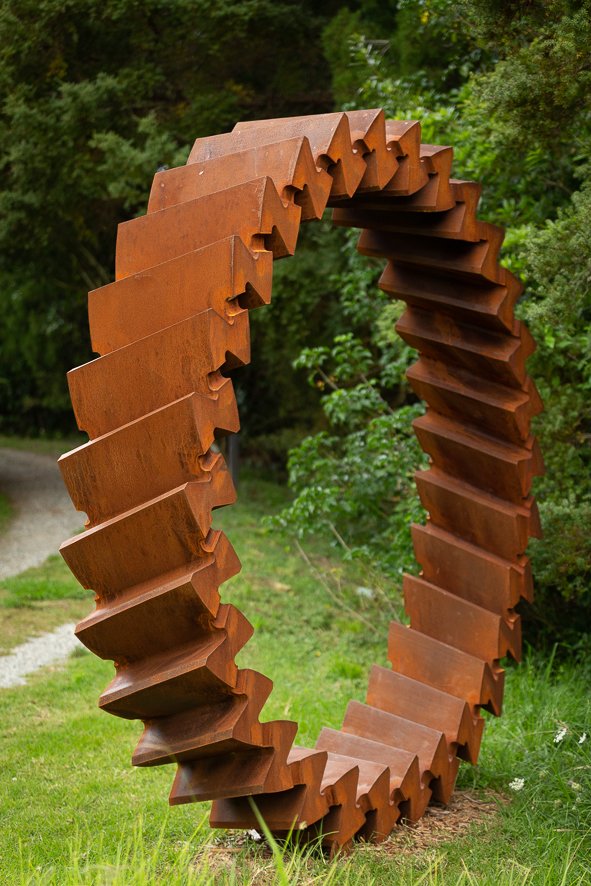David McCracken
My first ten thousand course corrections, 2023
Welded corten steel
2800 diameter x 520 deep
Price on request
Proudly presented in association with Gow Langsford Gallery
David McCracken’s practice often concerns elevating humble, everyday objects into memorable, large-scale sculptures. He started sculpting in his early days by carving driftwood and worked making props for sets before moving into metals. A job in his youth working for a craftsman who made all his own tools proved to be foundational. There he learnt that discarded material could be transformed into something useful, even beautiful. As McCracken recalls, ”I noticed how working men found and expressed respect for their fellow man through appreciation of their craft and skill, as represented by the objects and edifices of the made environment. As a maker, this remains essential to me; that the quality of your work can be a symbol of respect for your fellow man.”
After years of working with metals, often experimenting at a large scale, McCracken has developed innovative ways of working that influence the forms he makes. He uses techniques such as ‘drop-forging’, where large steel weights are dropped onto sheet aluminium from a crane, and ‘hydroforming’, a way of stretching steel with hydrostatic pressures. McCracken is interested in manipulating materials to generate their own form, as opposed to casting, which he views to be a more static process.
Flexible belts and mechanical gears have been the subject of his recent investigations, and My first ten thousand course corrections is no exception. Its large, looped form with raised ridges, recalls the shapes of bulldozer tread or an immense driving belt, and becomes an enduring monumental object. The durability of the weighty industrial corten steel streaking and rusting enhances the sculpture with a timeless and weathered appearance. The intricate, repeated pattern creates a smooth, continuous composition and the seamless craftsmanship within it causes the viewer to wonder exactly how it was made. Here we see McCracken exploring ideas integral to his practice: mass and volume, flaws and faults, absence and presence, stress and pressure.
As McCracken has described, “The flexible belts that [my sculptures] are loosely based on are archetypal mechanical disruptors. As engineers managed to reconcile the conflicting demands of flexibility, precision and durability, they dislodged a raft of technologies. They are themselves increasingly dislodged as emergent technologies arise, and it was as discarded components that I discovered them, immediately drawn to the italicised, cursive beauty of the forms, albeit an elegance they could not achieve when pressed into their intended purpose.
There is also the beginning of an enquiry into the beauty and complexity of machined mechanical gears. The physics of mechanical gears have a rigorous mathematical precision to them so that the surfaces of meshing teeth never lose contact with each other when they're under load. It is something I have come to see as a metaphor for communication, the need being to maintain contact."
Other works


